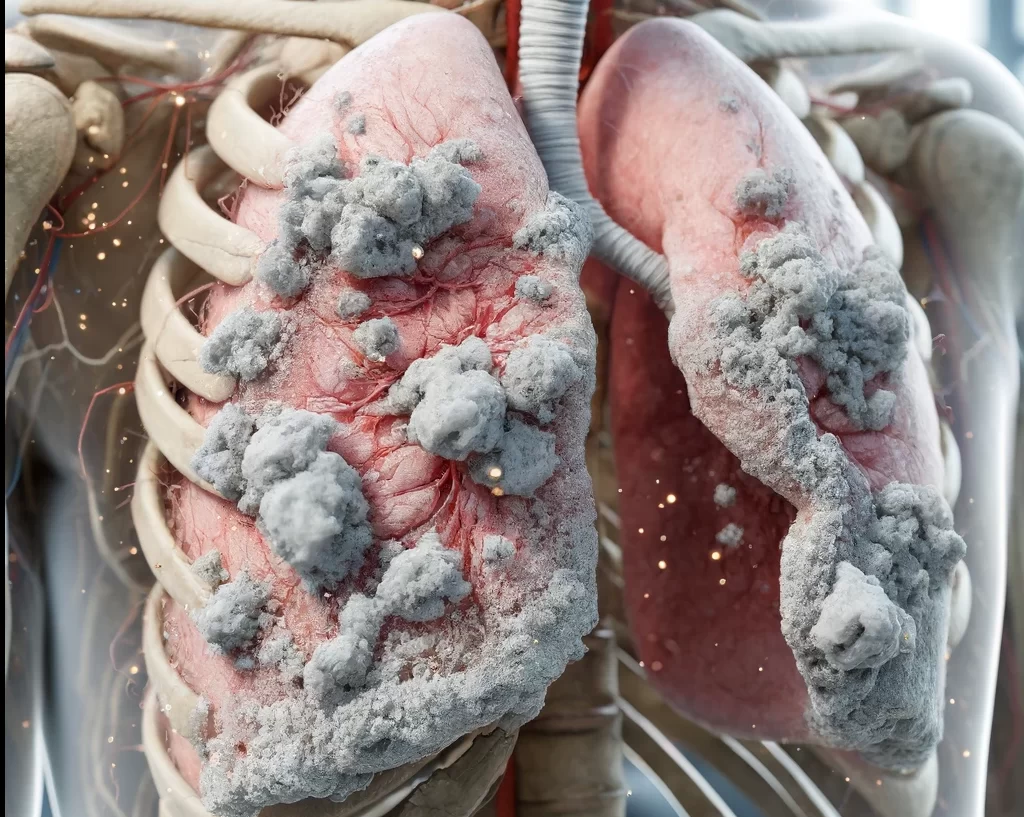About Asbestosis
Asbestosis is a chronic lung condition caused by long-term exposure to asbestos fibers, leading to lung scarring and reduced lung function. Asbestos exposure was common in many industries before its dangers were widely recognized.
Causes and Risk Factors
- Asbestos Exposure: The main cause of asbestosis is inhaling asbestos fibers, typically at workplaces like shipyards, construction sites, or old buildings.
- Jobs at Risk: Insulation workers, boilermakers, plumbers, electricians, demolition workers, and more.
- Age of Exposure: Peak use of asbestos was during the 1970s-1990s, but exposure still occurs in older structures.
Symptoms
- Shortness of breath, often worsening over time
- Persistent cough
- Wheezing and fatigue
- Chest pain
- Clubbed fingertips (swollen fingers)
- Reduced lung capacity
Diagnosis
- Initial Assessment: GP examination, including lung sound check and symptom history.
- Tests: Chest X-ray, CT scans, and lung function tests.
- Specialist Referral: For detailed lung assessments.
Treatment
- No Cure: Lung damage cannot be reversed, but symptoms can be managed.
- Lifestyle Adjustments: Stop smoking, exercise, and avoid further asbestos exposure.
- Vaccines: Annual flu shot and pneumococcal vaccine.
- Oxygen Therapy: For severe cases.
Preventing Asbestosis
- Avoid Exposure: Be cautious around materials containing asbestos, particularly in older buildings.
- Safety at Work: Follow safety protocols if asbestos exposure is possible.
Compensation for Affected Individuals
- Various government compensation schemes and legal avenues exist for those affected by asbestos exposure.
If you need more personalized support or have concerns about asbestos, contacting a medical professional is essential. Stay informed and take precautions to protect yourself if your environment may contain asbestos.







